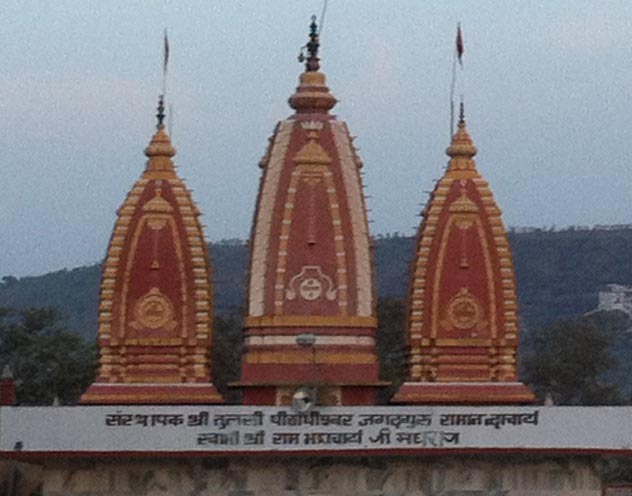Shri Tulsi Peeth Seva Nyas

Information of Shri Tulsi Peeth Seva Nyas, Chitrakoot, Madhya Pradesh
The Shri Tulsi Peeth Seva Nyas is a religious site in the Indian state of Madhya Pradesh. It is also known as a famous services institution that is specifically located in the region of Janki Kund, Chitrakoot. The place was established in the recent time under the leadership and supervision of Jagadguru Rambhadracharya.
Shri Tulsi Peeth Seva Nyas Religious Importance
The Tulsi Peeth has a rich religious background associated with it. Some of the experts including Rambhadracharya hold the belief that this particular Peeth is situated in a position where the God of Hindu i.e. Lord Rama give away his sandals to his brother Bharat. It has been noted that the premise of the structure serve as the residence of the Rambhadracharya. Again the temple within the structure is also titled as Kanch Mandir which has an attached hall associated with it. The Peeth is included in conducting religious activities such as Tulsi propagation of the religious texts of the Hindus along with serving the cows and the Sadhus among others. The Peeth also organise camps to help people with disability through delivering medical aid. These aspects have gathered the attention of the pilgrims over the years of its existence. There is large number of temples within the premise of the Peeth which further enhances its religious importance to a larger extent altogether. Some of the temples that one can found within the Peeth include Kanch Mandir, Manas Mandir and Darsha among others. Each of the temples mentioned has its own religious importance and the same ensures continuous flow of visitors throughout the year.
Shri Tulsi Peeth Seva Nyas Mythology & History
The site has a rich mythological significance associated with it in the last year 30 years of its existence. It is believed that the Peeth is involved with conducting activities including propagation of Ramcharitmanas, Vedic literature and serving the cows and the Sadhus among others. The temples placed within the premise of the Peeth are considered as quite sacred. In the year 1983, Rambhadracharya initiated Payovrata by consuming diets only including milk and fruits. During this particular practice, Rambhadracharya took the oath to speak only in Sanskrit language. This approach further impressed the raja of Chitrakoot during the 20th century and influences him to offer a land of 60 feet by 80 feet to Rambhadracharya in the banks of the Mandakini River. Furthermore, the sister of Rambhadracharya i.e. Gita Devi influenced the former to establish the ashram in the gifted place. When the ashram was built in the year 1986, Rambhadracharya initiated another Payovrata which continued for more than 9 months. Later a local businessman i.e. Umacharan Gupta offered as well as ensured the establishment of a bigger and better ashram with the addition of several temples. It is also widely believed that Rambhadracharya conducted numerous Kathas within this particular structure over the last 30 years or so. This has also attracted the attention of the Hindu devotees over the years.
Shri Tulsi Peeth Seva Nyas Architectural Importance
The ashram or the Peeth was mainly built following the local style of architecture. One can see a number of temples and other buildings within the site. The Kanch Mandir within the site has idols of Lord Rama. There is also small Hanuman temple that is positioned at the rear end of the Kanch Mandir within the site. The doors and windows of this particular temple are made entirely of glass which can also be comprehended from the names of the temple itself. Again the Manas Mandir has architecture which resembles with the other parts of the structure in terms of design.
- Andhra Pradesh Temples
- Assam Temples
- Bihar Temples
- New Delhi Temples
- Goa Temples
- Gujarat Temples
- Jammu and Kashmir Temples
- Karnataka Temples
- Kerala Temples
- Madhya Pradesh Temples
- Maharashtra Temples
- Odisha Temples
- Punjab Temples
- Rajasthan Temples
- Sikkim Temples
- Tamil Nadu Temples
- Telangana Temples
- Uttar Pradesh Temples
- Uttarakhand Temples
- West Bengal Temples